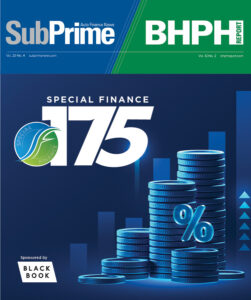ABA upbeat about Q1 delinquency rates

Auto financing metrics within the American Bankers Association’s latest Consumer Credit Delinquency Bulletin showed mixed movement in the first quarter as the overall reading prompted the assessment that consumers continued to manage their finances responsibly.
Delinquencies settled lower in seven of the 11 individual loan categories compared to the previous quarter, according to the ABA report that defines a delinquency as a payment that is 30 days or more overdue.
In the auto space, direct auto loan delinquencies — contracts arranged directly through a bank — rose from 0.75 percent to 0.81 percent. Meanwhile, indirect auto loan delinquencies — financing arranged through a third party such as a dealer — fell from 1.54 percent to 1.45 percent.
The composite ratio, which tracks delinquencies in eight closed-end installment loan categories, fell 3 basis points to 1.38 percent of all accounts, continuing a three-year trend of remaining well below the 15-year average of 2.23 percent.
“More people have jobs, wages are higher, home values have increased and consumers didn’t overextend themselves during the holiday season,” ABA chief economist James Chessen. “Even with a mild slowdown in the economy in the first quarter, consumers have shown a remarkable ability to ensure their debt levels are manageable.”
The bulletin indicated home-related delinquencies fell in two out of three categories. Home equity line delinquencies fell 3 basis points to 1.15 percent of all accounts, while home equity loan delinquencies rose 6 basis points to 2.74 percent of all accounts after falling 23 basis points in the previous quarter. The first quarter marks the first time since 2008 that both home equity loan and line delinquencies are at or below their 15-year averages.
Property improvement loan delinquencies fell 3 basis points to 0.89 percent of all accounts.
“As the housing market continues its slow and steady recovery, consumers have more valuable equity at stake, which makes their loan payments even more of a top priority,” Chessen said. “Growing equity also makes new home equity loans a viable option for qualified home owners.
“The market for home equity loans and lines will likely continue to grow as a larger pool of qualified borrowers looks to take advantage of low rates to make property improvements or pay off higher-interest debt,” he continued.
The bulletin also pointed out that bank card delinquencies fell slightly in the first quarter, dropping 5 basis points to 2.47 percent of all accounts. They remain well below their 15-year average of 3.71 percent.
Chessen expects low delinquency levels to continue amid stable economic conditions in the U.S. and consumers’ disciplined approach to credit.
“With household wealth near an all-time high and economic fundamentals holding steady, delinquencies are likely to remain near these historic lows,” he said.
ABA noted the Q1 composite ratio is made up of eight closed-end loans, and all figures are seasonally adjusted based upon the number of accounts.

 View The Latest Edition
View The Latest Edition

